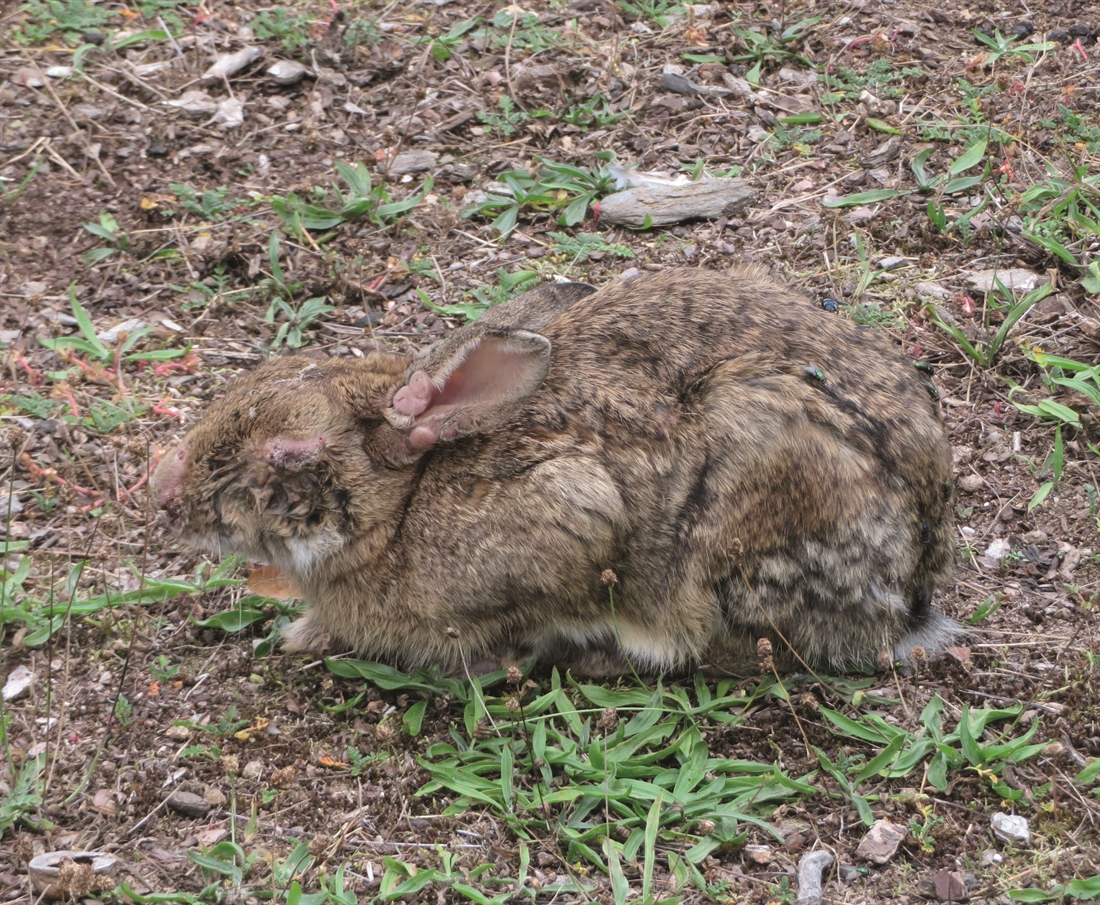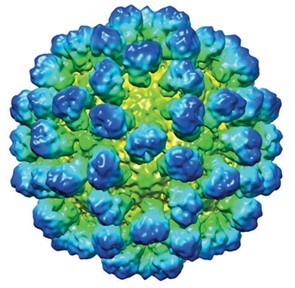To eat or not to eat?
Rabbit health is an important topic for hunters. Patrick Hook explains all about the diseases and parasites that can afflict your quarry – and if it is safe to eat

Anyone who shoots rabbits regularly will know that they can suffer from a number of diseases and parasites, so when a sick animal is encountered, what should you do with it? Is it safe for you and your family to eat? If not, what about your dog or ferret? There are also other reasons why this is a relevant subject for hunters – such as why a whole population can disappear seemingly overnight. I therefore thought it would be worth looking into the matter further.
As with most animals, rabbits can contract all manner of diseases and conditions, so I will focus on the main ones that are relevant to us. By far the best known bunny ailment is ‘mixy’ – or myxomatosis, to give it its proper name. This horrible viral disease originated in South America, from where it was introduced into France in 1952. It didn’t take long to spread across the European continent and subsequently into the UK. I hate seeing the terrified victims of this nasty affliction and do what I can to end their suffering as quickly and painlessly as possible.
A member of the poxvirus family, mixy is mostly passed from animal to animal by insect bites. In this country that mainly involves the European rabbit flea, Spilopsyllus cuniculi. It can also be transmitted by mosquitoes and midges as well as any other species that can penetrate the skin. The fleas in question are able to determine when the female rabbits they are infesting are due to give birth, and time their own egg laying to match so that their larvae have plenty to feed on. The disease can also be spread directly from animal to animal when the population density is high.
Sadly it is only too easy to see when a bunny has been infected – the most prominent feature being grotesque subcutaneous swellings around the eyes, often making them either completely
or partially blind. They also suffer from breathing difficulties, loss of appetite and usually have pus seeping from the eyes and most orifices. The first signs of the disease typically begin to show around four or five days after the individual is infected, and from then it depends on the strain of the virus as to how quickly things progress.
In very virulent forms of the virus the afflicted rabbit will die very quickly – typically within about 12 days. Ironically this means that it doesn’t get passed on to others as efficiently as it does with weaker strains. Not all of those with it will die – some manage to recover after about eight weeks, usually ending up with vivid scars and lesions across the face. Those that survive are immune for a considerable time, but males tend to be infertile for about a year. Mothers are able to pass on a degree of immunity to their young via antibodies in their milk, although it doesn’t last for much more than a month or so. Myxomatosis is only fatal to rabbits; it can infect hares, but rarely and even then usually not badly.
The myxoma virus kills a higher percentage of animals it infects when the temperature is lower. This is possibly because of lowered resistance to secondary infections such as pneumonia. Interestingly some rabbits show a genetic resistance to the disease, but as with all microbial involvement the virus keeps mutating, so it will never completely go away. This means that outbreaks are likely to keep occurring and we will keep finding the defenceless victims sitting helpless, waiting for a very uncertain future.
As far as eating infected bunnies goes, informed opinion has it that they are safe to consume, both for humans and pets.
Legend has it that the old boys of yesteryear considered the meat sweeter than that of ‘clean’ rabbits. That said, you won’t find me cooking one!
VHD
The other major killer of rabbits in this country is viral haemorrhagic disease, known as VHD for short. Also often referred to as rabbit haemorrhagic disease (RHD), it can strike and wipe out an entire colony more or less overnight. The way it manifests itself in outbreaks can be somewhat strange – one side of a valley might be completely denuded of bunnies, while the other may remain totally unaffected. Typically the first sign is blood in droppings. The next is a total absence of rabbits.
When the disease – caused by a contagious virus called calicivirus takes hold of an individual, it causes a variety of severe internal problems. These include liver failure, blocked blood vessels and haemorrhaging in the organs, predominantly the lungs. Death usually results within around 30 hours.
Many rabbits in the UK are immune, due to having been exposed previously to a less virulent strain of the virus. VHD was originally recognised in China in 1984 and is a relative newcomer to the UK, being identified here for the first time in 1992. In some instances the disease causes only a mild temperature and lethargy, so as those affected usually stay below ground we rarely see them until they recover. Consequently we don’t realise there’s anything happening. When the virus hits harder, however, it becomes more obvious as sudden death will wipe out most or all of those in the area.
There are two strains of this disease, known as VHD1 and VHD2. The former kills more or less every animal it infects, whereas the latter – which was first identified in France in 2010 before reaching the UK shortly after – sees around 80% recovering.
The disease is transmitted between individuals either directly or indirectly through contact with infected material such as nasal secretions and saliva, as well as faeces from predators such as foxes that have eaten diseased rabbits. The virus can persist in the environment for months and can even survive being frozen.
The issue of whether it is safe to eat rabbits that have been infected with VHD is not really relevant, as the disease is so virulent that once an individual is infected it will be too sick to show above ground. I’ve certainly never knowingly seen an infected one.
Parasites
In addition to the various diseases that rabbits can suffer from, their other main health issue concerns parasites, both internal and external. The former include all manner of worms, flukes and micro- organisms, while the latter mostly involve fleas and mites. One of the main types of worms that hunters are likely to encounter are tapeworms, which are sometimes observed during the gutting process. As adults they live in the intestines of carnivores such as foxes, where they produce a near constant stream of eggs that are then deposited
in the animals’ faeces.
When a rabbit eats vegetation that has been contaminated by such eggs, the next stage in the tapeworm’s life cycle begins. The eggs hatch in the intestines and the resultant larvae bore their way through the lining of the gut and make their way into the liver. As they mature they form fluid-filled sacs in the body cavity where they stay until the rabbit is eaten by a predator, whereupon the cycle repeats itself.
Another worm that affects rabbits is the common rabbit pinworm (Passalurus ambiguus), which is another parasite that inhabits the gut. Infestation does not usually cause the host any major health problems although it can cause skin irritation, especially around the hind end.
My personal take on this subject is that whenever I discover any form of illness in a rabbit that I’ve shot, it either gets disposed of or is used as fox bait. I generally hate blithely following the dictates of the health- and-safety brigade, but on this subject I will go along with them. I certainly don’t want to contract any virulent diseases or be infected by nasty parasites, and I don’t want any friends, family or pets to be exposed to them either. So for me it’s a strict rule: if I’m not sure, bin it!
Extra Information
- Although the rabbit flea – which is mostly found around the ears – will jump onto other animals, it cannot survive on them. The main risk of fleas to rabbits is that along with the link to myxomatosis they can cause severe itching, leading to irritation and tissue damage.
- Many shooters will have encountered rabbits that have white spots in the liver. This is usually caused by a condition called hepatic coccidiosis, which is a highly contagious infection caused by protozoal parasites that enter the gut. While some individuals manage to recover after a few weeks of severe illness, many die within 10 days of contracting it. The official advice is typically that although cooking will kill the parasites, the bodies should be disposed of (preferably by incineration) and not eaten, either by humans or pets.
- Infection with a tapeworm doesn’t usually cause any outward signs other than loss of body weight. However, if a severe infestation occurs there may be symptoms such as diarrhoea. Rabbit tapeworms cannot live in other species.






